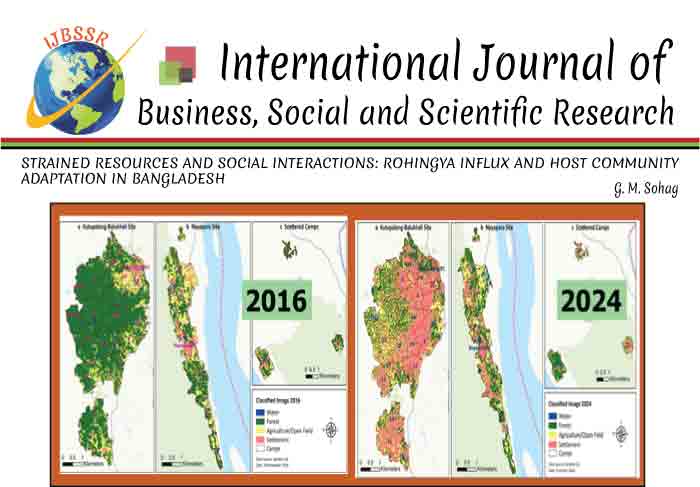STRAINED RESOURCES AND SOCIAL INTERACTIONS: ROHINGYA INFLUX AND HOST COMMUNITY ADAPTATION IN BANGLADESH

DOI: http://doi.org/10.55706/ijbssr13202
The large-scale
influx of Rohingya populations into Cox’s Bazar has placed significant pressure
on natural resources, disrupting the region’s environmental and socio-economic
balance. This study examines how environmental stress—arising from land degradation,
deforestation, and water scarcity—interacts with livelihood challenges and
resource competition to shape the experiences of both host communities and
Rohingya refugees. Grounded in the framework of environmental justice, the
research adopts a mixed-methods approach, incorporating field surveys, key
informant interviews, and participatory observations in selected unions of
Ukhiya Upazila. It explores community-level perceptions of environmental change
and access to resources, identifying pathways through which environmental
stress may lead to either tension or cooperation. Assuming current trends
persist through 2025, the study projects that built-up and camp settlement
areas may expand by an additional 5 to 10 sq km, while forest and shrub cover
could decline to approximately 115 sq km in Teknaf and 60 sq km in Ukhiya.
Agricultural and salt-producing areas are expected to expand modestly, with
water bodies experiencing slight fluctuations due to factors such as land
subsidence or land-use conversion. The study’s findings aim to inform
sustainable, equity-focused strategies for resource management and contribute
to policy discussions on environmentally induced displacement and community
resilience.

